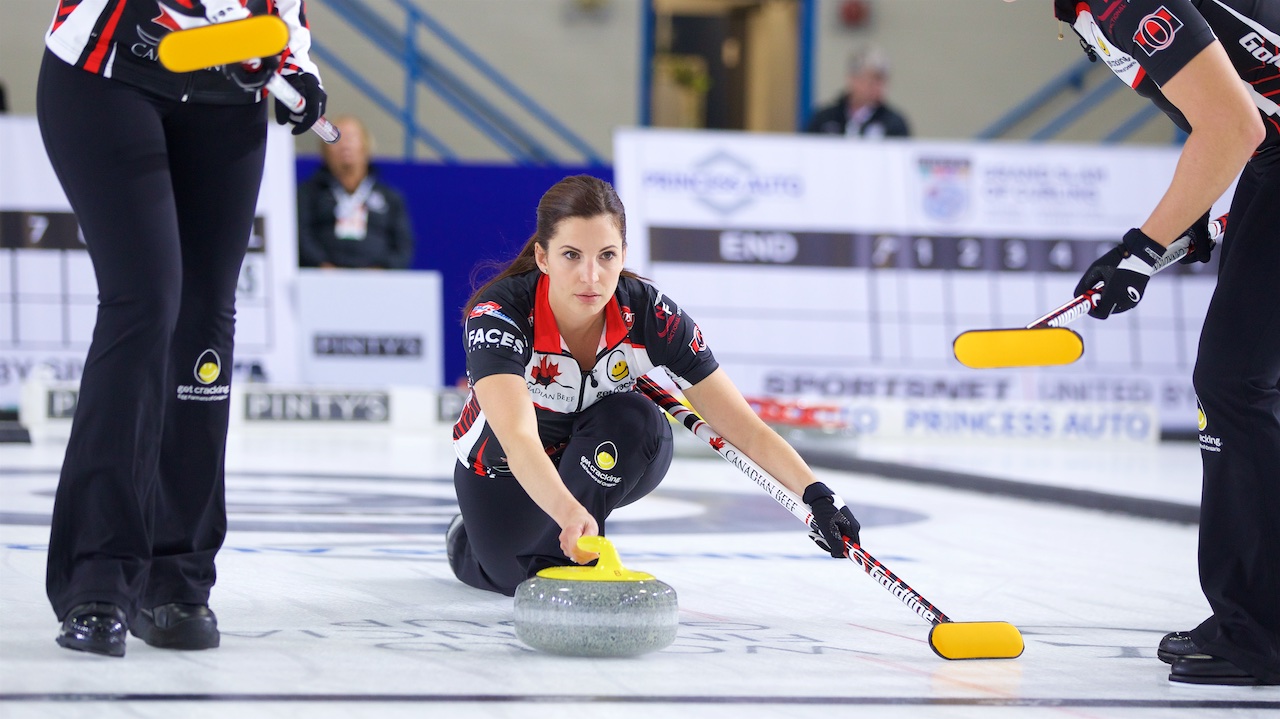Weagle: GSOC brings women’s game to new level
By Lisa Weagle
Most curlers know how the Pinty’s Grand Slam of Curling was formed. The story of the 18 men’s teams who boycotted the Brier to lead to the creation of the Grand Slam has been well documented. But what about the women’s side?
The path for women in the Pinty’s Grand Slam of Curling took longer. While the Grand Slam for men was instituted in the 2001-02 season, it wasn’t until 2006 that the Grand Slam included women’s events. Some of the existing club bonspiels on the ladies’ tour were considered Grand Slams, including long-standing spiels in Winnipeg, Saskatoon and Calgary, but they weren’t actually operated by the series. Women joined the Players’ Championship in 2006, the first arena Grand Slam event with the men.
I competed in my first Players’ Championship in 2011, which was at the end of my first season with Team Homan. I will admit it, I was awestruck at first being on the ice beside legends of the game. Our team played well and it was a confidence boost to be there, and it pushed me to improve my game. Early experiences in the Grand Slams have helped me and countless other players develop as athletes and have raised the calibre of curling in Canada and around the world.
The sport moved forward for women in 2012 when Sportsnet acquired the Grand Slams. The Masters was added to the women’s schedule that year, a second Grand Slam in an arena. My teammates and I captured that inaugural women’s title, and looking back now, it’s special to be part of the history of this growth era of the sport. A women’s division was added to the Canadian Open in 2014 and to the Tour Challenge and the National in 2015. A new event, the Champions Cup, was created in 2016 with both men’s and women’s sides.
In 2016, Team Homan was invited to play in the Elite 10, which was a men’s-only event at the time. There was some hype around our participation, but we didn’t pay much attention. We were grateful for another opportunity to compete and learn, and we prepared for it like we would any event. It hit me when we were out on the ice and I saw young girls in the stands, holding signs and cheering us on, that our participation might have meant something more.
A lot of people thought this was an opportunity to compare: Are women as good as men at curling? But to me, that wasn’t the point. While it was great to play in the Elite 10, we didn’t set out to prove anything. We know from television numbers and ticket sales that fans support women’s and men’s curling. We both provide high quality, entertaining curling that people love to watch. If anything, I hope it helped more people see the women’s field is strong and merits its own equal place on tour.
This season, a women’s division was added to the Elite 10, and now in 2018 we are at the point where women and men have an equal number of Grand Slam events, with equal prize money, and equal television time. Let that sink in for a second. Look around professional and amateur sport, and think about how many sports where this is the case. I’d say in few sports, if any.
Our sport would not have gotten to this point without a number of people who had a vision and made it happen. We are grateful to Sportsnet for growing and professionalizing our sport, and creating opportunities for women that didn’t exist. As well, to the sponsors who see value in supporting and expanding the Pinty’s Grand Slam of Curling. And of course, the women who came before us and fought for the growth of our sport.
A few weeks ago we ran our third annual Team Homan Junior Curling Camp, which is one way we like to give back and connect with the next generation of curlers. So many young curlers, like our campers, dream of competing on tour in the Grand Slams. It makes me happy to know when they get the chance, they will have equal opportunities, regardless of their gender.
